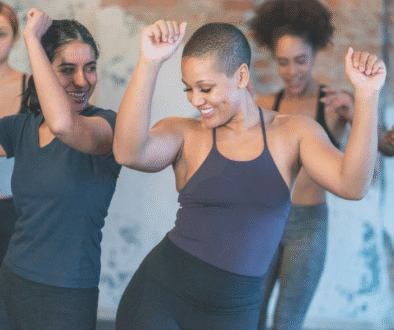Endurance in Fitness
By Aparna Mele MD
Endurance refers to your body’s physical capability to sustain an exercise for an extended period. Cardiovascular endurance is the ability of your heart and lungs to fuel your body with oxygen and refers to how well you can continuously perform a repetitive exercise or movement for an extended period, typically more than 20-30min at a time. Muscular endurance is the ability of your muscles to work continuously without getting tired. Your aerobic endurance depends on how effectively your body can deliver oxygen to your working muscles, determined by how well your heart and lungs can do their jobs so increasing cardiorespiratory endurance improves oxygen uptake in the lungs and heart and can help a person sustain you through a walk, run, or cycle for mile after mile!
Increasing cardiorespiratory endurance through higher-intensity aerobic activities can help a person burn more calories. Those with higher cardiorespiratory endurance are less likely to develop high blood pressure and decrease the risk of coronary heart disease and all-cause mortality. There is a a positive correlation between cardiorespiratory endurance levels and multitask performance among adults aged between 59 and 80 years. Other positive gains include better sleep quality, stress reduction, heightened self-esteem, stronger bones, improved immunity, and better fitness performance!
Assessing your endurance can be easily gauged using the Talk Test protocol. According to the American Council on Exercise (ACE), during the talk test, you’ll do some sort of cardio exercise (like treadmill walking) while wearing a heart rate monitor. Then, you’ll increase the intensity every minute or two until you’re working hard enough that you can no longer comfortably carry on a conversation.
You can’t talk and suck back oxygen simultaneously. So, when talking becomes difficult enough, it’s a sign that your body is no longer taking in oxygen efficiently enough to turn it into the ATP your muscles need. Basically, you’ve hit the upper limit of your cardiovascular endurance.
When attempting to build your cardiovascular fitness, it’s a good idea to figure out your target heart rate, by subtracting your current age from 220. Multiply that number by 64% and 76%to get your full range for moderate-intensity physical activity. Continue to use a heart rate monitor or fitness tracker during workouts to monitor your own progress. You can work to improve your heart rate by staying towards the lower end of the range, while keeping an consistent intensity or pace that is comfortable for you. Then over time, work to increase your training heart rate by 5% or by doing your chosen activity 5% faster or longer.
Increase the level of difficulty slowly, since the cardiovascular system adapts to tougher workouts much faster than your bones, muscles, tendons, and ligaments and you want to prevent injury to them. The American Council on Exercise recommends increasing the length of your workout by only 10% per week. Adding high intensive training (HIIT) is beneficial since it comprises alternating intervals of hard work then easy recovery and is a highly effective way to increase performance and ability. HIIT cuts down on workout time without sacrificing results, helping you work smarter, not harder, and a 2021 review of studies published in the Journal of Physiology found that low-volume HIIT, which can be done in as little as 15 minutes, enlarged the chambers of the heart, making it pump blood more efficiently throughout the body. Incorporating sprint intervals into your training can also boost overall endurance and then help you improve speed. Honestly even a simple walk at a normal to slightly increased pace several times a day for 20-30 minutes is also incredibly beneficial. Did you know that studies have shown that dog owners live longer? This observation may likely tie into these inherent benefits of walking.
The best way to check in on your progress is by timing how long you can exercise at a particular effort level. If a few weeks ago you could jog comfortably at 5 mph for 20min and now you can do that for 25min, you are building endurance! Keep in mind that generally the lower your heart rate trends, the more conditioned you are becoming in terms of cardiovascular endurance. Keep the intensity low while you gradually build up your stamina, and then start elevating the intensity. The pitfall to avoid is starting too hard and then burning out or injuring yourself.
Cardiovascular endurance can help you dance all day at a music fest, spend the day exploring a new city on foot, or chase your dog around the yard. Not to mention, it becomes even more important the older we get, as our overall conditioning declines unless we work to improve and maintain it and thereby decrease our risk of diseases and falls. Include cardio into your life for the long haul and remember that consistency is far more important than intensity. If you are feeling frustrated or hit a plateau, back up on the resistance but keep showing up for yourself. You don’t have to grind yourselves to the ground to benefit—just stick with it!



